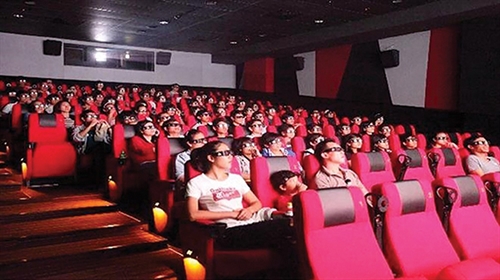The Ministry of Culture, Sports and Tourism (MOCST) has proposed some revisions to the third amended draft law on cinematography concerning film dissemination, classification, licensing and production, aiming to facilitate the development of the film industry.
Unlike current regulations, the draft no longer requires cinematographic establishments with film distribution function to possess a movie theater in order to be licensed to import or export films.
 |
| Watching movie at Lotte Cinema Da Nang in Da Nang city__Photo: Internet |
Specifically, a cinematographic establishment could import or export films if it has a film dissemination and classification permit from the MOCST or a provincial-level People’s Committee, or a broadcast decision from a licensed press agency. In addition, to-be-imported or -exported films must not have prohibited contents.
Also in the draft, the ministry proposes not requiring a license for films disseminated in the cyberspace but underlining that such movies must be copyrighted, not contain prohibited contents, and must display content warnings and ratings. However, foreign enterprises disseminating films in Vietnam via the cyberspace must set up their branches or representative offices in the country, reads the draft.
The draft also says films shown in movie theaters or broadcast on television must be licensed by competent authorities while press agencies licensed to edit foreign television channels must be responsible for their edited contents.
In this draft, the MOCST proposes adding to the current five content rating labels a new one, PG label, which indicates films that may be appropriate for under-13 children watching together with their parents or adult guardians. The current five rating labels include P - suitable for all ages, C13, C16 and C18 - not appropriate for children aged under 13, 16 or 18, respectively, and C - not recommended for everyone.
Under the draft, state budget funds would be used for production of films with appropriate themes; procurement of films of high ideological or artistic value; distribution and dissemination of films serving people in rural, mountainous and deep-lying areas or on islands, children and the armed forces; and organization of national film festivals.
The state budget-funded film production would be carried out in the form of task assignment, order placement or bidding. In case of bidding, regulations on selection of contractors in special cases would be applied.- (VLLF)









